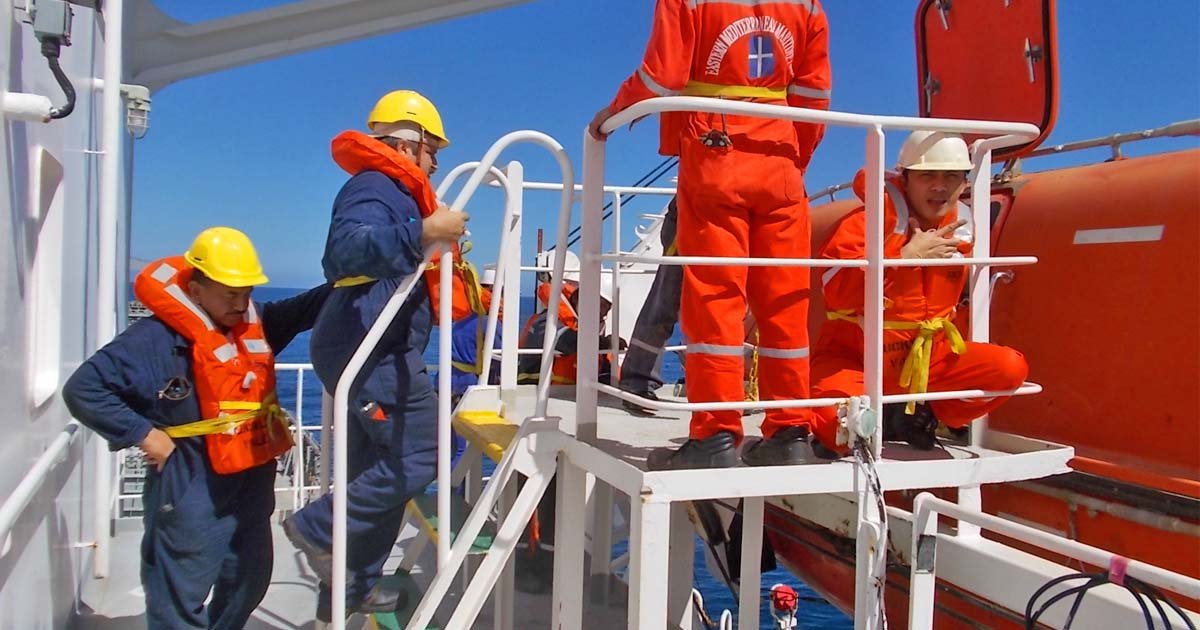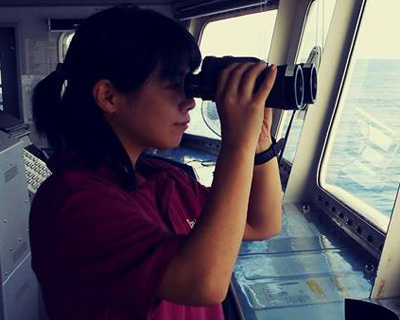Safety drills are regular practice exercises on board that ensure the crew’s preparation and effective response during an emergency situation.
Because these training exercises simulate real-life emergencies, vessel personnel can develop the muscle memory and critical thinking skills necessary to react effectively when a real crisis strikes.
Safety drills are mandatory on board. SOLAS and the ISPS require ships to conduct drills and record them in the appropriate log book.
Mandatory Drills Required by SOLAS/ ISPS
All types of ships covered under SOLAS must perform mandatory safety drills.
1. Fire – Conducted at least once every month. More details on SOLAS Chapter III – Regulation 19-3.2.
2. Abandon Ship—This usually follows the fire drill, which the ship must perform at least once every month. For more details, see SOLAS Chapter III—Regulation 19-3.2.
3. Rescue Boat Waterborne (if other than lifeboat) – Launched with their assigned crew aboard each month and maneuvered in the water. More details on SOLAS Chapter III Regulation 19-3.3.6.
4. Life Raft Launching – Carried out every four months, usually after the abandon ship drill. SOLAS Chapter III – Regulation 19 – 4.3:
5. Free-Fall Lifeboat Waterborne – Schedule varies depending on the lifeboat type as per SOLAS Chapter III – Regulation 19-3:
- Every three months – The ship’s crew must launch each lifeboat, with its assigned crew on board and maneuvered in the water, at least once every three months during an abandon ship drill.
- Every 6 Months (Alternative) – Free-fall launched with its assigned operating crew aboard and maneuvered in the water.

6. Emergency Steering Drill – Performed once every three months as per SOLAS Chapter V – Regulation 26-4.
7. Steering Gear Test—Conducted 12 hours before departure. On some ships with long voyages, the steering gear is tested 12 hours before arrival. For more details, see SOLAS Chapter V—Regulation 26-1.
8. Security Drill – Carried out at least every three (3) months as per the ISPS Code.
9. Piracy Prevention Drill – Performed every six months or within 48 hours before entering a piracy high-risk area.
Pollution and Other Emergencies
Pollution prevention drills and other emergencies are required by the Flag States and other regulations.
These drills can be combined as a consequence of the event.
10. Fire/ Explosion – Once a year. It may be combined with collision
11. Grounding/ Stranding/ Touching Bottom – Once a year. It may be combined with hull failure.
12. Collision – Once a year. It may be combined with fire/explosion.
13. Hull Failure – Once a year. It may be combined with grounding
14. Excessive List – Once a year. It may be combined with hull failure.
15. Equipment Failure (Blackout, Main Engine breakdown, or steering gear failure) – Once a year.
16. Operational Oil Spill (pipeline leak, hose rupture, tank overflow, or hull leak) – To be combined with toxic gas release every 3 months in accordance with the SOPEP.

17. Q.I. Notification – If a ship operates in the United States waters, she must conduct a quarterly exercise called the Qualified Individual (Q.I.) Notification.
18. Authorized Person – Twice per year. Only for vessels transiting the Panama Canal and holding a PCSOPEP
Additional Drills per Company’s Policy (Non-Statutory)
Non-statutory drills are additional drills required by the company’s own policies to ensure safety and preparedness beyond the legal obligations.
19. Emergency Towing – Every six months. Based on the “ETA Instructions Manual.”
20. Man Overboard—Every three months, based on the ICS “Bridge Procedures Guide” and the “Emergency Manual.”
21. Line Throwing Apparatus Demonstration – Every three months.
22. Critical Bridge Equipment Failure – Every three months.
23. Helicopter Emergency – Annually. Based on ICS “Helicopter/ Ship Operation” and the “Emergency Manual.”
24. Heavy Weather Damage Drill – Every six months.
25. Ship-to-Ship (STS) Drill – Within 24 hours and not more than 7 days preceding an STS transfer operation. If the vessel frequently conducts STS operations, they must conduct the STS drill once a month. Based on ISGOTT or the International Safety Guide for Oil Tankers and Terminals.
26. Serious Illness, Injury, or Death – Every six months.
27. Rescue from an Enclosed Space (tank, engine room) – Every three months. Based on the “Emergency Manual.”

Drills may vary depending on the ship’s type and trading area. You can find the list of all the safety drills a vessel must perform in the company manual under Drill Matrix.
Records of each drill in the appropriate form shall indicate time, date, brief description, crew participation, and equipment used (alarms, public addresser, fire pumps, breathing apparatus, fireman outfits, fire extinguishing equipment, etc.).
The Officer in Charge must enter these safety drills in the bridge log book indicating the time and date.
May the winds be in your favor.



0 Comments